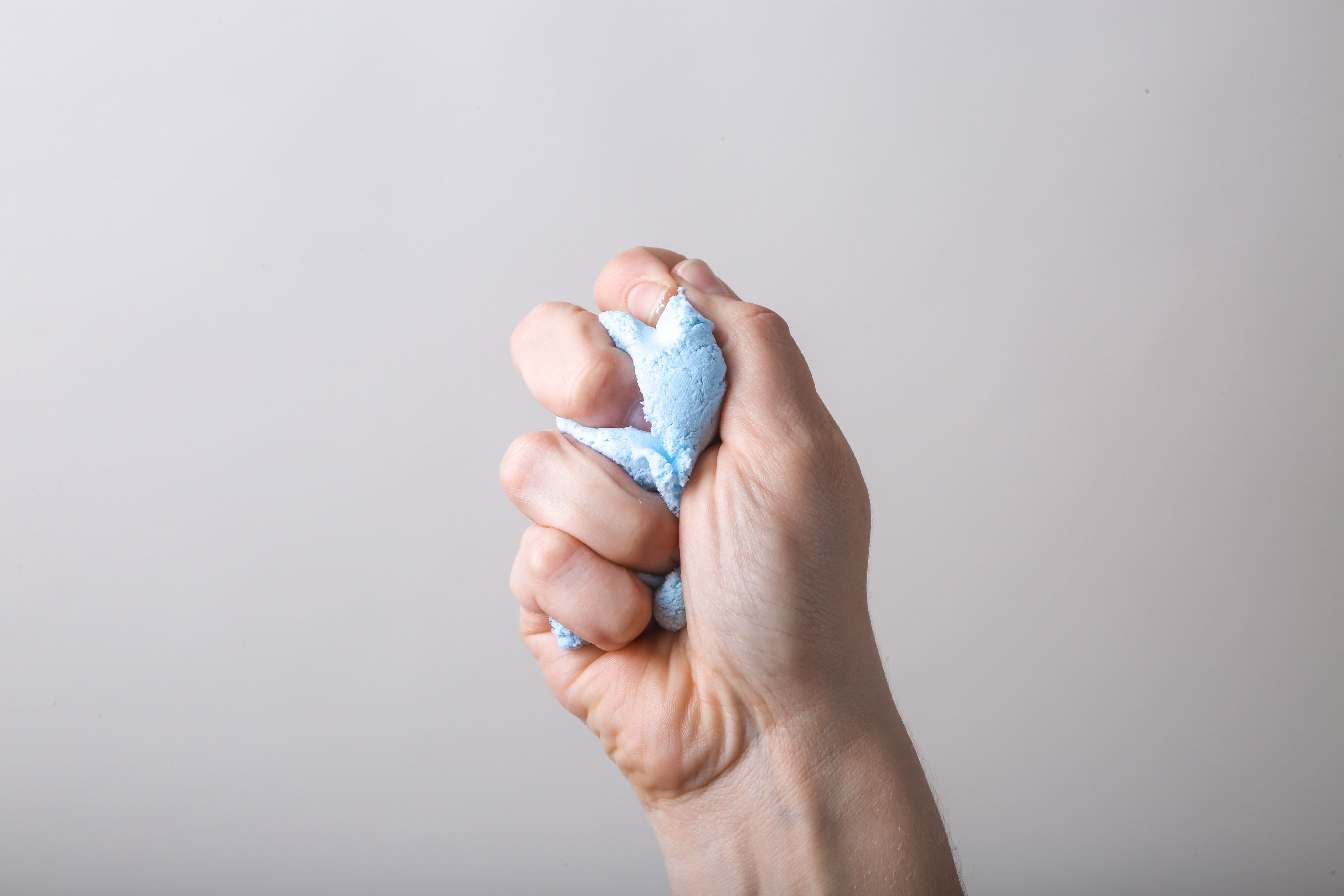
What Are Attachment Styles — And Can I Change Mine?
Attachment styles can be a useful tool, but it’s important to remember that they aren’t your destiny.
Back in the summer of 2019, a friend suggested I read Attached: The New Science of Adult Attachment and How It Can Help You Find—and Keep—Love by Amir Levine and Rachel Heller, and lended me their copy.
At the time, I was casually seeing a guy from a dating app I barely knew but was infatuated with… only for him to ghost me shortly after we hooked up.
I hoped the book would help with my dating life. After all, I was on dating apps to hopefully connect authentically with a potential partner, but I felt frustrated that the connections I met mostly fizzled out over a few weeks, sometimes days.
I’d often ask myself: Was it my problem or their problem?
Upon reading Attached, I learned about the ways we develop patterns of emotional attachment from childhood into adulthood. The book unlocked answers to many unresolved questions I’d had about dating since I was a teenager.
I also gained a new emotional literacy to better understand myself and how I related to those around me: my family, friends, roommates, community, etc. This newfound knowledge helped me understand how the people around me interacted with each other, too.
By the end of the book, I concluded I had an anxious attachment style that stemmed from unhealed childhood trauma. I initially felt hopeless, however, because I thought this meant that I was the problem.
Already having been in therapy for four years, I’d still barely explored the full extent of my childhood trauma. With a newly identified anxious attachment style, I had yet another concern to add to what felt like an endless therapeutic to-do list.
Just when I’d lost hope, I met up with an old friend who’d recently moved to town. We hadn’t seen each other since college. One night out at the bar turned into them coming back to my place… and, well, now we’ve been dating for nearly five years.
My relationship with my partner has shown me that, in safe relationships and with the right support, we can heal and change our attachment styles.
I’ve been able to transform my anxious attachment into a secure one, while also compassionately remembering that being securely attached doesn’t mean I’ll never feel anxious or need reassurance.
My hope with this article is that you’ll learn the same — that your attachment style is not your destiny, but rather, a tool for greater self-awareness and a roadmap toward the types of relationships you want to have.
In this article, you’ll find:
- Definitions: We’ll define and identify characteristics of the four attachment styles.
- Trauma and attachment styles: We’ll cover how trauma informs how we are attached to one another.
- How to overcome attachment issues: How do I change my attachment style? Can it even be changed? We provide direction on how to manage and overcome insecure attachment.
A NOTE ABOUT SAFETY
Identifying your attachment style can help you better understand your therapeutic goals if you’re currently in therapy. If you’re not currently in therapy, we recommend seeking a licensed professional to help you navigate attachment issues, especially because they can impact relationships.
Attachment Theory 101: What is Attachment Theory and Where Did It Come From?
Attachment theory describes how the ways in which we react to and build intimacy with others are often rooted in our earlier life experiences.
In the mid-20th century, British child behavioral psychologist John Bowlby developed this framework to explore how our early relationships with caregivers shape our relationships later in life.
He emphasized that the quality of these early bonds — how safe, consistent, and attuned these relationships are — influences our emotional development and the relational patterns we exhibit throughout life.
Further adding onto Bowlby’s work, developmental psychologist Mary Ainsworth developed the four attachment styles through the "Strange Situation" study in the 70s, which observed how infants reacted to the presence and absence of their primary caregiver in a controlled environment.
By analyzing the infants' responses to being left alone, being with a stranger, and being reunited with their caregiver, Ainsworth identified distinct patterns of attachment behavior.
We know those patterns today as the four different attachment styles: secure, anxious, avoidant, and anxious-avoidant (sometimes called “disorganized”).
How Does Trauma Influence Attachment Styles?
Attachment styles are a conditioned response to the connections modeled to us by caregivers in our developmental years.
How our caregivers bond with us can influence future relationships well into our adulthood, even long after caregivers are no longer present in our lives.
This means that if our caregivers exposed us to a secure attachment style, we’re more likely to form secure attachments with others, even into our entire lifetime.
Likewise, if our caregivers have some form of insecure attachment — anxious, avoidant, or anxious-avoidant — we may experience insecure attachment growing up and into our adult years, which can avalanche into relationship problems and harmful social dynamics.
Put another way, the trauma our caregivers experienced in their own relationships can be passed down to us through their example, as they may struggle to bond and connect with us as infants.
What are the Four Attachment Styles?
Secure Attachment
A secure attachment style is characterized by the ability to form stable, supportive relationships.
Even if these relationships still require work, they can feel more lighthearted, nurturing, reciprocal, and easy to navigate because there is typically mutual trust, respect, and understanding.
People with a secure attachment feel comfortable with intimacy and vulnerability. They also tend to be more honest with others, due to shared trust.
Likewise, they can communicate their needs and emotions openly while respecting their partner's capacity and autonomy, which can help build reciprocal relationships.
Those with secure attachments also tend to have more emotional capacity to navigate conflict more effectively.
Examples of secure attachment
- You can ask someone for help without fear of judgment.
- You can actively listen and work towards a mutually beneficial solution when disagreeing with someone.
- You are able to enjoy time away independently from someone without feeling overly preoccupied or anxious.
Anxious Attachment
Anxious attachment (also referred to as anxious-preoccupied or anxious-ambivalent) can lead to difficulties in forming and maintaining stable relationships due to fear and mistrust.
People with anxious attachment may struggle with intimacy and trust, as a result of fear of rejection, fear of abandonment, and codependency.
As a result, it may be difficult for those with anxious attachment to openly communicate needs and emotions effectively, which has the potential to lead to misunderstandings and conflict.
Those with anxious attachments may also find it harder to navigate conflicts productively, often leading to strained and unstable relationships.
Examples of anxious attachment
- It’s hard for you to openly express your feelings because you’re scared of rejection.
- You have difficulty trusting other people’s intentions and often worry that they will abandon you.
- You tend to interpret neutral behaviors as signs of disinterest or rejection.
Avoidant Attachment
Avoidant attachment is characterized by emotional distancing, in which someone avoids emotional closeness and intimacy with others.
For instance, they may come across as emotionally unavailable, suppressing their feelings and prioritizing self-reliance over connection, as a way to avoid conflict or discomfort.
Avoidance can lead to difficulties in forming deep, meaningful relationships, as they might struggle to open up to others or to trust their partners.
Their tendency to withdraw in times of emotional stress or conflict can further strain relationships, making it challenging to build and sustain consistent, supportive bonds.
Examples of avoidant attachment
- You often prioritize independence and self-sufficiency over forming close relationships.
- You may avoid discussing personal feelings or vulnerabilities with others.
- You prefer to keep a certain level of emotional distance from others.
Anxious-Avoidant Attachment
Anxious-avoidant attachment — also referred to as disorganized attachment — can look like a combination of behaviors from both anxious and avoidant attachment styles.
Those with this attachment style may exhibit inconsistent and unpredictable behaviors in their relationships, often desiring intimacy but fearing the rejection that may follow, and craving closeness while simultaneously pushing others away.
This often creates a dynamic of rotating desire and distance, closeness and sabotage, leading to emotional turmoil and instability in their relationships.
Examples of anxious-avoidant attachment
- You tend to push people away when they get too close emotionally.
- You desire emotional closeness but simultaneously fear and avoid intimacy.
- You maintain distance from others because you often anticipate being let down or hurt.
Is It Bad to Have an Insecure Attachment Style?
No! Attachment styles aren't good or bad, so much as they are adaptive. If you have an insecure attachment style, it's because it helped you cope with a lack of safety at some point in life. That doesn't mean you've done something wrong.
That said, if you find your attachment style is creating difficulties in your relationships, you may benefit from getting support and working toward a more secure way of relating to others.
We'll discuss ways of working through attachment wounds in the next section.
Can Your Attachment Style Change?
Yes! Your attachment style can absolutely change. You might even notice it shifts depending on the relationship you're in.
If insecure attachment was modeled to you growing up, it’s not inevitable that you’ll have insecure attachment with others for the rest of your life! Likewise, if secure attachment was modeled to you growing up, you could still develop insecure attachment at some point in your life.
Different factors play into attachment styles, but the common denominator are the relationships around us.
While our caregivers are our first model, they aren’t our only one! Family, friends, colleagues, community members, and even pets model their attachment styles to us, which can impact the ways we emotionally attach to them.
How to Overcome Attachment Issues
Forming secure and supportive relationships often depends on working through earlier attachment struggles.
Without examining your earlier patterns in relationships, you may notice repeated cycles of conflict, misunderstanding, and emotional distance, as well as struggles with trust, communication, and emotional regulation.
Although conflict is a natural part of relationships, an insecure attachment may also prevent someone from growing through conflict and authentically connecting with others.
As humans, we are emotional creatures. We crave social connection, even if our brains discourage us from pursuing it due to past harm or neglect.
The past, however, does not have to dictate our future!
And while early relationships may be the source of our struggles, relationships can also be the place where we find healing. Seeking out positive relationships — romantically or otherwise — can help us establish trust, safely lean into intimacy, and practice rupture and repair.
Of course, if you’re experiencing mistrust and instability in a relationship, it’s important to distinguish between what is an attachment wound coming to the surface, versus what might be a toxic or even abusive relationship.
That said, if you find yourself repeating the same patterns, a licensed therapist can be hugely helpful in overcoming insecure attachment by providing expert guidance, and modeling the skills needed for secure, reciprocal relationships.
Next Steps
Secure attachment doesn't happen in a vacuum.
An insecure attachment doesn't happen alone, and thankfully, finding a sense of security and safety with others doesn't have to happen alone, either.
Therapists trained in attachment theory can help individuals recognize their attachment style, understand how it impacts their relationships, and identify patterns of behavior that may be worth examining and unraveling.
Not sure where to start?
Alma’s directory of over 20,000 licensed clinicians includes experts in attachment theory, trauma, and relationships — most of whom take insurance.
Aug 12, 2024

Looking for a therapist?
Get tips on finding a therapist who gets you.
By submitting this form, you are agreeing to Alma's privacy policy.



